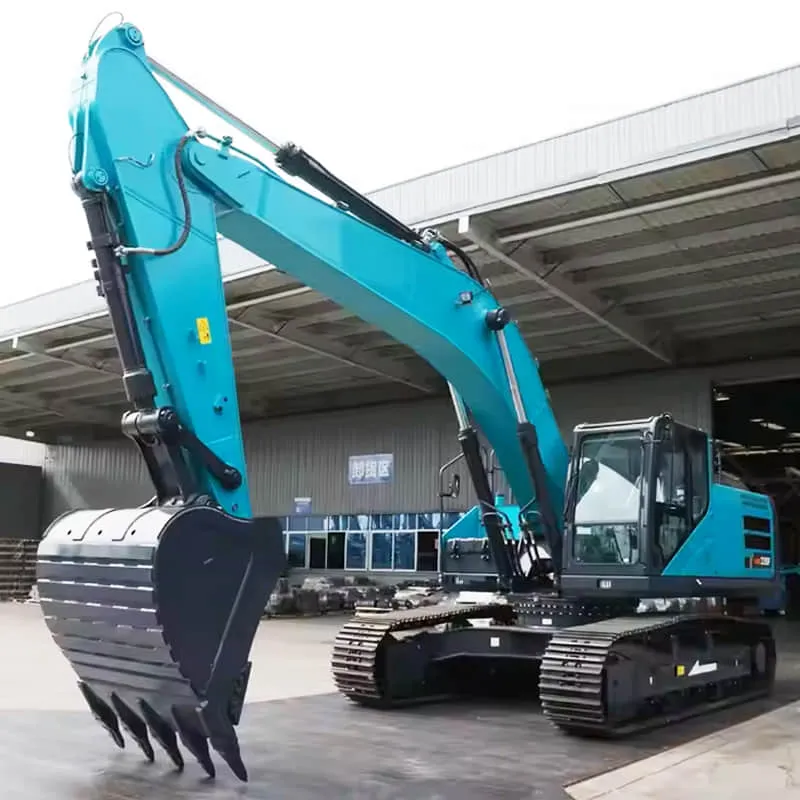הפעלת מחפרון מגיעה עם אחריות רצינית. אתה מתמודד עם סיכונים כמו חפצים נופלים, התהפכויות, ומגע עם קווי חשמל. טיפול בבעיות בטיחות הוא חיוני כדי להגן על עצמך ועל אחרים. צעדים פרואקטיביים, כמו מודעות לסיכונים והכשרה נכונה, מפחיתים תאונות. תעדף בטיחות כדי להגן על חיים, ציוד ואת אתר העבודה.
בעיות בטיחות לפני הפעלה וטיפים
חשיבות ההכשרה וההסמכה הנכונה
לפני הפעלת מחפר, עליך להשלים הכשרה נכונה ולקבל הסמכה. זה מבטיח שאתה מבין כיצד להפעיל את הציוד בצורה בטוחה ויעילה. תוכניות הכשרה מלמדות אותך על בקרות, פרוטוקולי בטיחות, ונהלי חירום. ההסמכה גם מדגימה את הכשירות שלך למעסיקים ולגופים רגולטוריים. ללא הכנה זו, אתה מסכן תאונות שעשויות לפגוע בך או באחרים. תמיד ודא שההכשרה שלך עומדת בסטנדרטים של התעשייה.
ביצוע בדיקות יסודיות לציוד
בדיקת הטרקטור לפני השימוש היא קריטית. בדוק נזקים נראים לעין, דליפות או חלקים שחוקים. הסתכל על המערכת ההידראולית, המסילות והאביזרים כדי לוודא שהם פועלים כראוי. בדוק את הבקרים כדי לאשר שהם מגיבים כפי שמצופה. זיהוי בעיות בטיחות פוטנציאליות בשלב מוקדם מונע תקלות ותאונות. השתמש ברשימת בדיקה כדי לוודא שאינך מפספס דבר במהלך הבדיקה.
הערכת אתר העבודה לסכנות
הערך את אתר העבודה לסכנות פוטנציאליות לפני התחלה. חפש שטח לא אחיד, קווי חשמל מעל או תשתיות תת-קרקעיות. סמן אזורים מסוכנים בבירור כדי למנוע תאונות. הבנת הסביבה עוזרת לך לתכנן מסלולי חפירה בטוחים ומפחיתה את הסיכוי להיתקל במכשולים בלתי צפויים. אתר עבודה מוכן היטב מפחית סיכונים לכל המעורבים.
סקירת המדריך של המפעיל להנחיות בטיחות
המדריך של המפעיל מכיל מידע בטיחותי חיוני ספציפי לדגם החופר שלך. הקדש זמן לעיין בו לפני תחילת העבודה. למד על יכולות המכונה, מגבלותיה ופרקטיקות מומלצות. בעקבות ההנחיות הללו תוכל להימנע מבעיות בטיחות נפוצות ולוודא שאתה מפעיל את הציוד בצורה נכונה. שמור את המדריך בהישג יד לעיון מהיר אם יש צורך.

בעיות בטיחות במהלך הפעלת החופר
שמירה על תקשורת ברורה עם הצוות
תקשורת אפקטיבית עם הצוות שלך היא חיונית במהלך הפעלת החופר. השתמש בסימני יד, רדיו או שיטות אחרות שהוסכמו כדי להישאר מחובר. זה מבטיח שכולם יודעים על תנועות המכונה ומונע תאונות. תמיד אשר הוראות לפני שתמשיך בכל משימה. חוסר הבנה יכול להוביל לבעיות בטיחות חמורות, לכן יש לתת עדיפות לבהירות ועקביות באינטראקציות שלך.
זיהוי והימנעות מסיכונים בסביבה
הישאר מודע לסביבתך בכל עת. שים לב למכשולים כמו קווי חשמל, עצים או ציוד אחר. שמור על מרחק בטוח מהמכשולים הללו כדי למנוע התנגשות או נזק. אם אתה מבחין בסיכונים חדשים במהלך הפעולה, עצור וטפל בהם מיד. זיהוי סיכונים מוקדם עוזר לך להימנע ממצבים מסוכנים ולשמור על סביבה בטוחה לעבודה.
הפעלה בטוחה על מדרונות ואדמה לא יציבה
מחפרים יכולים להיות לא יציבים על מדרונות או שטח לא אחיד. תמיד גש למדרונות בזהירות ושמור על משקל המכונה מאוזן. הימנע מסיבוב או תנועת הזרוע כאשר אתה על שיפוע, מכיוון שזה מגביר את הסיכון להתהפכות. אם האדמה נראית לא יציבה, בדוק אותה קודם עם הדלי כדי לוודא שהיא יכולה לתמוך במשקל המחפר. הפעלה בטוחה על שטח מאתגר מפחיתה את הסיכוי להתהפכות.
מניעת העמסה יתרה והבטחת מהירויות בטוחות
העמסת יתר על הטרקטורון יכולה להעמיס על רכיביו ולהוביל לכישלון של הציוד. תמיד בדוק את קיבולת העומס של המכונה והימנע מע exceeded. פעל במהירויות בטוחות, במיוחד באזורים צרים או צפופים. תנועה מהירה מדי יכולה להפחית את השליטה שלך ולהגביר את הסיכון לתאונות. שמירה על פרקטיקות אלו מבטיחה פעולה חלקה ומפחיתה בעיות בטיחות.

בעיות בטיחות לאחר פעולה ופרקטיקות הטובות ביותר
ביצוע הליכי סגירה נכונים
לאחר שסיימת את עבודתך, בצע את הליכי הסגירה הנכונים כדי להבטיח בטיחות. הורד את הדלי לקרקע כדי לייצב את הטרקטורון. כבה את המנוע והסר את המפתח כדי למנוע הפעלה לא מכוונת. הפעל את בלם החניה כדי לאבטח את המכונה במקומה. צעדים אלו מפחיתים את הסיכון לתנועה לא מכוונת או נזק לציוד. תמיד הפנה למדריך המפעיל להוראות סגירה ספציפיות המותאמות לדגם הטרקטורון שלך.
בדיקת הטרקטורון לנזק או בלאי
לאחר שהמכונה כבויה, בדוק אותה עבור כל סימני נזק או בלאי. בדוק את הצינורות ההידראוליים, המסילות, והאביזרים עבור סדקים, דליפות, או בעיות אחרות. חפש בולטים רופפים או בלאי לא רגיל על חלקים נעים. זיהוי בעיות מוקדם עוזר לך לטפל בהן לפני שהן מחמירות. בדיקה מהירה לאחר הפעולה מבטיחה שהחופר יישאר במצב עבודה טוב לשימוש הבא.
ביצוע תחזוקה שוטפת ותיקונים
תחזוקה סדירה שומרת על החופר שלך פועל ביעילות. נקו את המכונה כדי להסיר לכלוך ופסולת שעשויים להשפיע על הביצועים שלה. שימון חלקים נעים מונע בלאי. החלף רכיבים שחוקים מיד כדי למנוע תקלות. שמירה על לוחות זמנים של תחזוקה מאריכה את חיי הציוד שלך ומפחיתה את זמן השבתה.
אבטחת החופר כדי למנוע שימוש לא מורשה
כאשר אתה מסיים את היום, אבטח את הטרקטורון כדי למנוע גישה לא מורשית. אחסן אותו באזור ייעודי, עדיף מאחורי שער נעול. השתמש במנעולים על הקבינה ומיכל הדלק כדי למנוע גניבה או התעסקות. שימוש לא מורשה יכול להוביל לתאונות או נזק, לכן קח אמצעי זהירות כדי להגן על הציוד.
הפעלת טרקטורון בצורה בטוחה דורשת תשומת לב לפרטים בכל שלב. בדוק את הבדיקות לפני ההפעלה, שמור על מודעות במהלך השימוש, ופעל לפי הפרוטוקולים לאחר ההפעלה. הישאר ערני ופעל לפי הנחיות הבטיחות כדי להגן על עצמך ועל הצוות שלך. תן עדיפות לבטיחות בכל יום.

